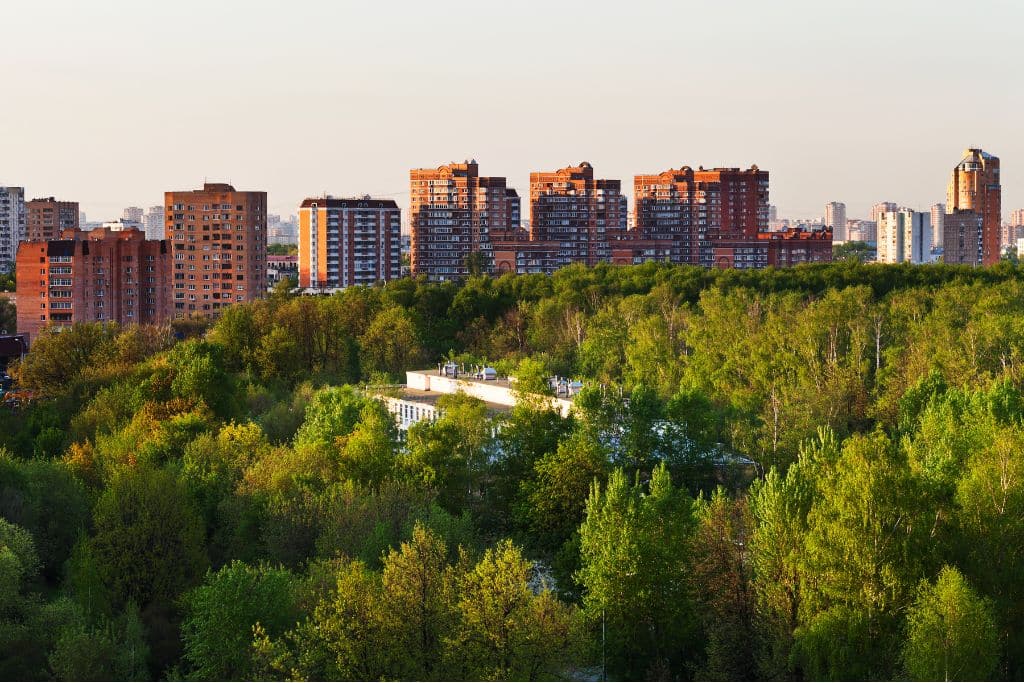Vegetation in urban environments offers many benefits beyond aesthetics and well-being. Certain plant species can serve as passive air samplers, detecting and indicating air quality levels. However, vegetation can also be susceptible to damage from air pollution.
—
Plants and Air Quality: A Beneficial Relationship
Plants provide a peaceful and aesthetically pleasing environment; they are associated with well-being, provide temperature mitigation and shade, and increase our quality of life by bringing natural elements and wildlife habitats into urban settings.
Over the years, the primary purpose of flora has shifted from beautification of the area to providing other services such as stormwater reduction, temperature mitigation, energy conservation, and air quality improvement. Vegetation also provides oxygen for breathing, climate amelioration, soil preservation, and wildlife support. A well-positioned and configured vegetation barrier (VB) could be one of the green infrastructures incorporated in cities to improve local near-road air quality by dispersing air, removing dust, and absorbing other pollutants like carbon monoxide, sulphur dioxide and nitrogen dioxide.
Vegetation and green spaces have reduced effects on airborne pollutant concentrations. They can effectively change the air quality and composition, especially particulate matter (PM) – one of the most dangerous air pollutants, store pollutants and isolate carbon dioxide (CO2).
Well-chosen and well-placed vegetation in an urban environment can provide significant economic and social benefits and a small but beneficial impact on mitigating the effects of traffic, industry, and power production by filtering PM and absorbing gaseous pollutants such as ozone and nitrogen dioxide, thus improving air quality. When the vegetation is placed correctly, for example, between a road and a pedestrian path, it can shield people from some of the pollution sources by lowering exposure to exhaust fumes and road dust and deliver lower urban surface and air temperatures by providing shade and evapotranspiration. Green space vegetation, especially the tree canopy density, the richness of the shrub layer, and the proportion of tree-shrub-herb types and evergreen tree species, can influence PM and harmful air ion concentrations.

Plants can change their behaviours (i.e. growth, intake of nutrients) in response to environmental factors. Compared to animals, plants are susceptible to air pollution at low concentrations, serving as receptors of air pollution. This results in visible damage to leaf surfaces as many air-borne particulates and pollutants are absorbed by tree leaves. It can also result in stomatal damage, a decrease in the photosynthetic process, distract membrane permeability, growth reduction, and yield of sensitive plants.
As plants can be susceptible to air pollution, their leaves can determine air pollution by altering their physiology, thus providing a cost-effective passive air sampler for monitoring and distinguishing PM pollutants in urban environments. The severity of plant damage caused by air pollution may vary with the time of day and meteorological and environmental conditions such as temperature, wind, sunlight, precipitation, and soil type.
Air pollution can cause a reduction in the concentration of photosynthetic pigments such as chlorophyll. Some plants that react to air pollutants include the morning glory, which is sensitive to ozone, and its effects are visible on the leaves, and alfalfas, which respond to ozone but result in plant dry weight reduction.
You might also like: The Healing Power of Forest Bathing, Nature’s Remedy for Stress and Mental Well-Being
Soapwort (Saponaria officinalis), common daisy (Bellis perennis), and white clover (Trifolium repens) are among the few species capable of displaying sensitivity to particulate matter and added stress derived from traffic sources. Tree leaves have an essential role in the retention of particulate matter, and they are mostly affected when the wet and dry atmospheric build-up increases. Accumulation of pollutants, such as polycyclic aromatic hydrocarbons (PAHs), was observed in leaves exhibiting pubescence compared to leaves lacking it.
Although limited studies show the effects of particulate matter on plants – which greatly depend on the chemical composition of PM and the plant species – exposure to particulate matter usually causes increased water loss. It may also affect photosynthesis, respiration, and transpiration and allow the penetration of phytotoxic gaseous pollutants by dust deposition.
Petunias sp., perennial ryegrass (Lolium perenne) and timothy (Phleum pratensis) are sensitive to nitrogen dioxide. Exposure to such pollutants results in visible leaf and petal damage and reduced seed production. Road dust particles are responsible for growth inhibition and failure to develop in plants. Air pollution, in turn, may cause a detrimental effect on vegetation.
Air pollution poses risks to crop yields depending on the pollutant emission pattern, atmospheric transport, and leaf emission uptake, reducing the growth and crop yield before it is visible at a biochemical level. This can significantly affect food safety, food stores and create an economic disadvantage, regionally or globally. By analysing plant changes, it is possible to determine the air quality in an environment before it becomes a major environmental issue.
Certain lichens (e.g., Lecanora conizaeoides) and bryophytes (mosses and liverworts) may be used to indicate poor air quality and serve as effective air quality bioindicators. They do not have roots or cuticles, gain their nutrients directly from exposure to the atmosphere, and their high surface area to volume ratio stimulates the interference and accumulation of contaminants from the air. Although it varies depending on diverse lichen and bryophyte species, the majority prefers to grow in clean areas, while others can tolerate polluted air; crustier lichens such as golden shield lichens can be commonly found in areas where nitrogen dioxide and ammonia levels are high, especially near farmlands or traffic-heavy roads. Too much ambient air pollution may lead to lichens becoming toxic in short time frames, which consequently reduces their growth. Depending on lichen and bryophytes’ morphological and behavioural changes or by analysing pollutant accumulation, researchers can tell the quality of the air quality in an efficient and cost-effective manner.
Conclusion
While we frequently link surroundings full of greenery with feelings of serenity, mental clarity, and wellness, it is essential to recognise that vegetation offers benefits beyond mere aesthetic appeal. Some plant species are vulnerable to damage from ambient air pollution, but others are resilient and can assist in mitigating poor air quality. Thoughtful and strategic planning to introduce native species resistant to pollutants in heavily polluted urban areas could offer a solution to our efforts to preserve clean and healthy air.
You might also like: 10 Stunning Facts About Air Pollution


















